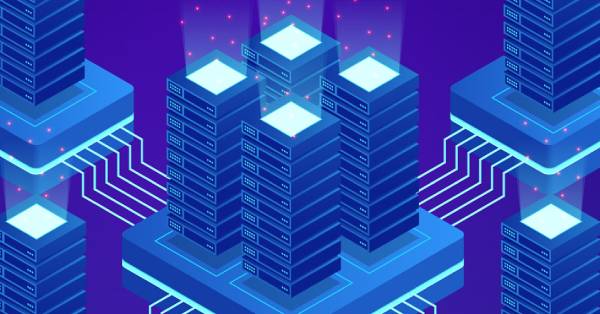Insights
Why Hadoop No Longer Fits in the Modern Data Ecosystem
May 20, 2021
For organizations that built their data estates ten years ago, Hadoop was likely the go-to platform for data lakes at the time. However, in the last five years, Hadoop’s popularity has been on a downward slide.
Apache Hadoop is an open-source technology platform that allows for data storage and distributed processing of large data sets across a cluster of nodes. Since the workload is divided across multiple nodes, data can be stored, accessed, and processed at scale, and multiple jobs can be run concurrently. The platform’s ability to handle big data positioned it as a market leader at a time when the way organizations looked at data was undergoing a fundamental change. However, many organizations that had Hadoop at the center of their data estate have started to wean off it and are looking at more modern ways of implementing enterprise data lakes.
So why is it that Hadoop, a once revolutionary technology, is now considered an obsolete platform? While this article will delve into the answers to this question at length, let us first review the changes that have been seen in the data ecosystem in the last decade. Most modern organizations today have unprecedented volumes of data, and flexibility and the ability to scale quickly have become paramount. As more and more businesses discover the true value of data, their expectations from data have changed, and faster, better insights have become indispensable. Time-to-value has become critical, and businesses have realized the time and resources they previously spent on maintaining and scaling their platform can be more fruitfully used in analytics. Merely having data is no longer sufficient, and it is speed to insight that drives the competitive edge.
In recent years, organizations have been rapidly shifting to Cloud-based data estates, which address most of Hadoop’s pain points and limitations. The unlimited flexibility and scalability of the Cloud, along with its pay-per-use approach, is an attractive alternative to the high upfront and scaling costs of Hadoop. Moreover, the Cloud does away with management, maintenance, and administration-related tasks, allowing organizations to reap the advantages of platform-as-a-service (PaaS), and focus on extracting value from their data.
Typical Challenges Associated with Hadoop
Today’s rapidly changing business dynamics demand a level of agility that many technology platforms of the past cannot meet. While Hadoop was undoubtedly one of the premier platforms of the last decade, organizations are realizing that the platform has reached the limits of its capacity and can no longer keep up with present business and IT needs. In this section, we look at some of the challenges that organizations relying on Hadoop are facing.
Pain Points from a Business Perspective
Locating data for analysis: Despite its cluster-based approach, Hadoop essentially remains a monolithic environment. In the absence of the right data governance or policies, it is hard to understand where your data is and where it is coming from. Data lakes in Hadoop are not well-organized and resemble “data swamps”, making it challenging to locate specific data for analysis.
Speed while analyzing large data sets: With modern data estates as a benchmark for comparison, the time taken to bring data into the Hadoop ecosystem and run analytics on it is very long. In the Cloud, for instance, it takes seconds to bring data in, and as the Cloud is usually well-integrated with peripheral solutions for BI and visualization (such as Power BI) and advanced analytics (like ML Studio in Azure), data becomes readily available to these services, with complete lineage and security guardrails, as soon as it is brought into the Cloud lake environment.
Requirement of technical skills and Citizen use: Knowledge of Hadoop programming languages is required to operate it, business teams do not always possess the skills required to locate and work with data in the Hadoop environment. In contrast, Cloud platforms democratize data and enable citizen use, reducing the business team’s reliance on the IT department.
Visibility into the age of data: There is no native visibility into the aging of data in Hadoop. There is no historization, and it becomes challenging to manage aged data or connect it to new data that comes into the Hadoop environment. Understandably, this creates a messy situation when it comes to versioning or consolidating old and new data sets.
Speed-to-Insight: Many organizations have realized that it takes nearly 5x longer to realize data insights with Hadoop than with Cloud-based data estates. This delay can, in part, be attributed to the time taken to add capacities, maintain, and manage the clusters. However, with business users at all levels looking to leverage data to support decision-making, speed-to-insight is also closely related to citizen access and usability of technology platforms. Compared to the Cloud, data democratization is fairly challenging in Hadoop environments, limiting the number of people who can use organizational data or develop new capabilities.
Pain Points from an IT Perspective
Upfront investment in infrastructure: Hadoop’s cluster-based approach requires a significant upfront investment in procuring machines for the cluster. These hardware and software costs are considered “sunk costs” regardless of the value realized from data processing. Moreover, the procurement and initial setup process is manual and often leads to delays in implementing the platform. Understandably, many organizations balk at the idea of making huge investments in technology without a clear picture of potential returns. With the Cloud, on the other hand, organizations have the flexibility to start small and scale up as needed without finding themselves tied down due to capital investments.
Keeping up with compute demands: With Hadoop, it is very hard to keep up with compute demands as the requirement for compute increases with the amount of data you have. Clusters are typically planned taking into account the peak computing power required for workloads. However, the addition of new workloads can push the watermark level of compute requirements, making it necessary to uplift the cluster to meet changing demands. Consider a situation where a new process requires additional compute one day of the week, pushing consumption to 120%. The additional compute capacity needed to accommodate this process will necessitate infrastructure investment, but the additional compute capacity will lie unused for six days in the week. Unlike Hadoop, scaling up and down in the Cloud is agile, flexible, and virtually limitless. Both storage and compute capacities can be dynamically adjusted as needed, with organizations paying only for what they consume.
Time taken to acquire new compute capacity: Adding new compute or storage capacity in Hadoop clusters involves a complete planning cycle. Unlike on the Cloud, where you can add capacity with a few clicks, for Hadoop, organizations first need to find right hardware and go through a procurement process. When the hardware arrives, it needs to be installed and configured. Consequently, a long lead time is required to plan for optimal levels of additional capacity to ensure that user needs are adequately met, without wastage of resources.
Support and maintenance: With Hadoop, the management, administration, and application maintenance, including hardware and software upgrades, need to be owned by the organization and require significant manual involvement. This poses several disadvantages, as the time spent in routine maintenance and upgrades can be more constructively spent using the platform to derive insights. Upgrades also take away from available capacity and can create downtime for the business if not planned carefully. Most Cloud environments, on the other hand, provide managed platform or service with technical updates and housekeeping being performed automatically in the background by the Cloud provider.
Query performance: The lack of optimized compute often leads to slow query performance in Hadoop. In the Cloud, on the other hand, workloads can be optimized, so organizations are not only planning for peak performance but are also reviewing and improving slow-performing workloads, using the right combination and balance of compute and storage options.
Technical debt: Any technical investment that is no longer paying off, cannot be used in conjunction with new modern platforms, or has reached its maximum capacity is considered technical debt. Organizations that are still using Hadoop now want to retire their technical debt and move to an environment where they are not adding any more hardware that will later become obsolete or spending resources on maintaining and operating technologies that will not yield sufficient ROI. With Cloud-based technology, users leverage the platform as a service without the need to buy hardware or add to their technical debt. Cloud technology is being seamlessly optimized and modernized behind the scenes, without any disruption or user involvement. Unlike the now aged Hadoop architecture, Cloud platforms will still be running as new a decade from now, although the underlying technology might have changed significantly.
Speed-to-Market: Hadoop’s physical cluster environment often limits experimentation and new solution development. As clusters are planned based on required and projected capacity, there is little room left for new analytics or product development, which could potentially lead to high returns, and experimentation typically requires fresh planning and additional capital investments to build capacity. If the experiment fails, organizations will still find themselves saddled with the spare capacity. Whereas with Cloud technologies, capacities can be added to build or test new hypotheses or solutions and retained or downscaled as needed once the testing is complete. This opens new avenues for innovation and significantly increases the speed-to-market of new implementable solutions.
In summation, while Hadoop was the go-to platform 5-10 years ago, it is no longer sufficient to meet organizational needs. Organizations that had invested in Hadoop now recognize that the platform is swiftly approaching (or has already reached) the outer limits of its capacity and are looking to modernize their data estates to stay ahead of the competition. Cloud platforms offer the flexibility, scalability, and agility that businesses require in today’s dynamic environment and allow organizations to make the most of their data in near-real-time without heavy capital investments.
With Cloud platforms, organizations can focus their efforts on analytics and deriving value from their data rather than expending valuable resources on maintaining clusters and worrying about capacity. Moreover, with Cloud-based data technology, organizations can improve their data value chain and empower the vast majority of business users with democratized access to data.


